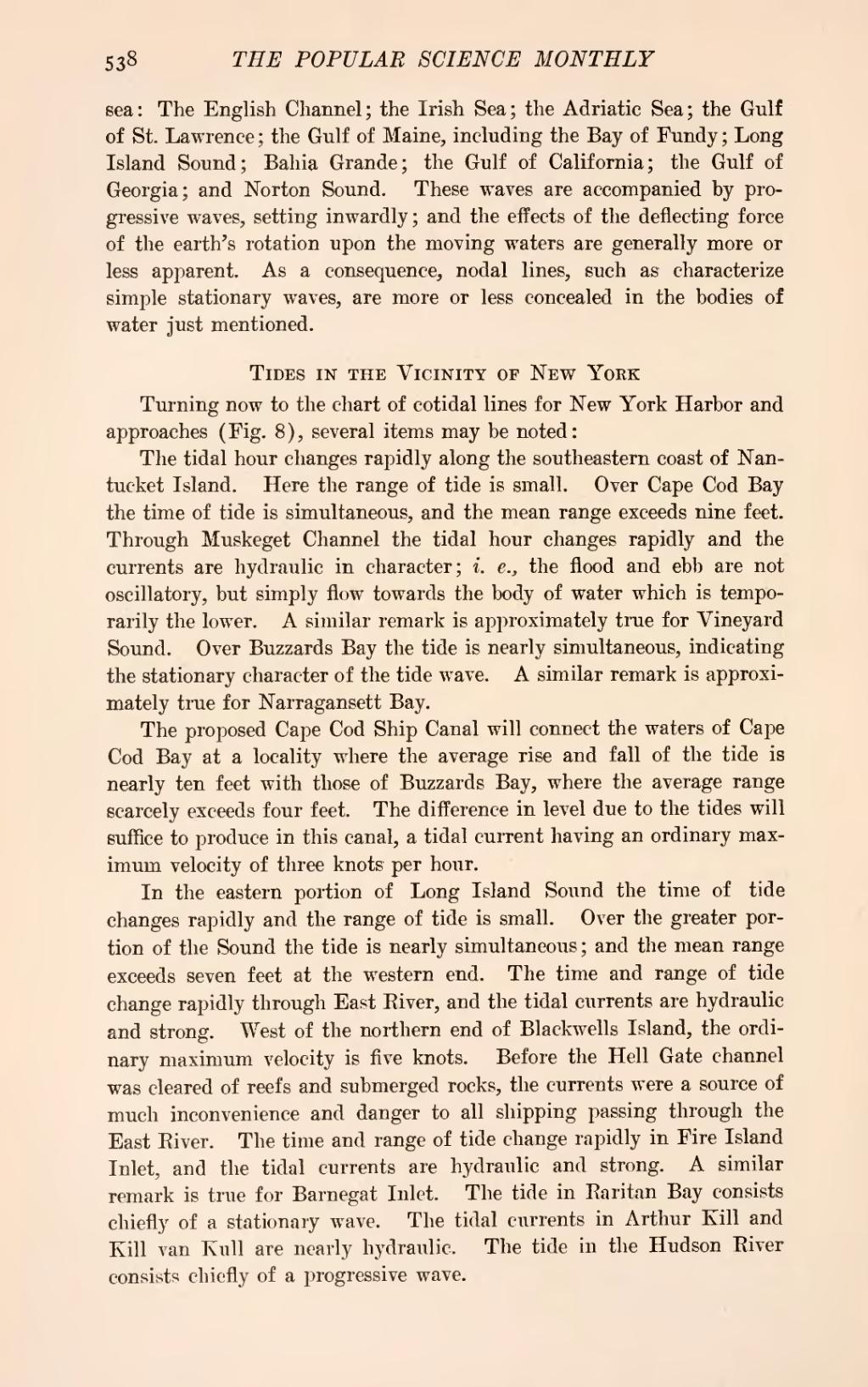sea: The English Channel; the Irish Sea; the Adriatic Sea; the Gulf of St. Lawrence; the Gulf of Maine, including the Bay of Fundy; Long Island Sound; Bahia Grande; the Gulf of California; the Gulf of Georgia; and Norton Sound. These waves are accompanied by progressive waves, setting inwardly; and the effects of the deflecting force of the earth's rotation upon the moving waters are generally more or less apparent. As a consequence, nodal lines, such as characterize simple stationary waves, are more or less concealed in the bodies of water just mentioned.
Tides in the Vicinity of New York
Turning now to the chart of cotidal lines for New York Harbor and approaches (Fig. 8), several items may be noted:
The tidal hour changes rapidly along the southeastern coast of Nantucket Island. Here the range of tide is small. Over Cape Cod Bay the time of tide is simultaneous, and the mean range exceeds nine feet. Through Muskeget Channel the tidal hour changes rapidly and the currents are hydraulic in character; i. e., the flood and ebb are not oscillatory, but simply flow towards the body of water which is temporarily the lower. A similar remark is approximately true for Vineyard Sound. Over Buzzards Bay the tide is nearly simultaneous, indicating the stationary character of the tide wave. A similar remark is approximately true for Narragansett Bay.
The proposed Cape Cod Ship Canal will connect the waters of Cape Cod Bay at a locality where the average rise and fall of the tide is nearly ten feet with those of Buzzards Bay, where the average range scarcely exceeds four feet. The difference in level due to the tides will suffice to produce in this canal, a tidal current having an ordinary maximum velocity of three knots per hour.
In the eastern portion of Long Island Sound the time of tide changes rapidly and the range of tide is small. Over the greater portion of the Sound the tide is nearly simultaneous; and the mean range exceeds seven feet at the western end. The time and range of tide change rapidly through East River, and the tidal currents are hydraulic and strong. West of the northern end of Blackwells Island, the ordinary maximum velocity is five knots. Before the Hell Gate channel was cleared of reefs and submerged rocks, the currents were a source of much inconvenience and danger to all shipping passing through the East River. The time and range of tide change rapidly in Fire Island Inlet, and the tidal currents are hydraulic and strong. A similar remark is true for Barnegat Inlet. The tide in Raritan Bay consists chiefly of a stationary wave. The tidal currents in Arthur Kill and Kill van Kull are nearly hydraulic. The tide in the Hudson River consists chiefly of a progressive wave.
